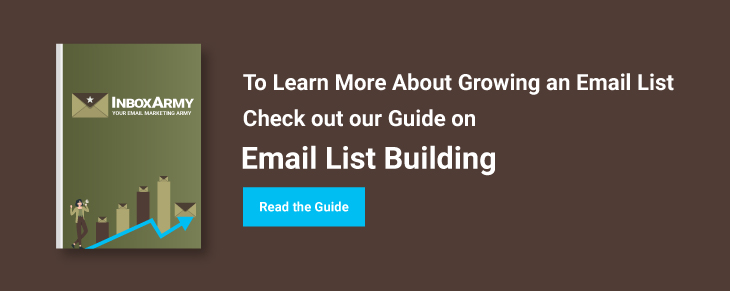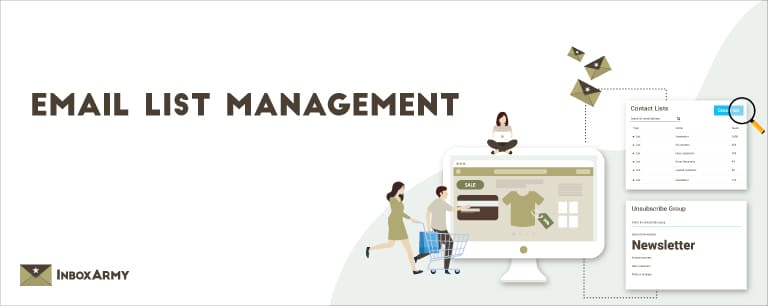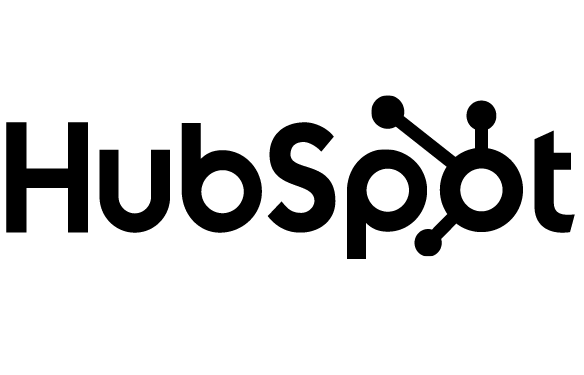Whether you’re launching a new business, trying to fill your sales pipeline, or just trying to move units, you need leads fast!
The urge to buy email lists and send bulk promotional emails is pretty tempting.
And why shouldn’t it be? Instantly getting a big list of valuable leads without having to put in any effort sounds too good to be true.
Well, that’s because it IS too good to be true.
Buying an email list and marketing to cold leads is never a good idea.
The leads aren’t nearly as valuable as you might think. And bulk emailing cold leads can have lasting, negative effects on your business.
In this article, we’ll explain why buying email lists is a bad idea and how it can hurt your business.
But we won’t just leave you out to dry. We’re also going to share 5 ways you can quickly grow a valuable email list and earn your money the right way.
How Buying Email Lists Works
To understand why marketing to purchased lists is a bad idea, you must first understand how buying email lists works and how it conflicts with the principles behind email marketing.
People purchase email lists from 3rd party vendors, also known as list brokers, who sell lists of emails they’ve acquired (a list of such vendors can be found here).
These vendors make all kinds of claims about their lists. Some vendors claim to sell email lists that pertain to a certain niche. Others claim their lists have a high deliverability rate.
Having never purchased one of these lists, it’s difficult to say how accurate these claims are. But the internet abounds with stories of people who’ve been defrauded by email lists that did not perform up to expectations. And it’s reasonable to be skeptical of anyone who sells email lists, much less makes claims as to how well those lists will perform.
How Do Emails End Up On These Lists
Vendors who sell email lists collect emails through a variety of means:
- They purchase them from people who sell lists they’ve built, including other email list vendors.
- They collect them using PPC & other lead generation methods.
- They use bots (or pay people low wages) to scrape emails from websites, forums, and comments sections.
- They use phony competitions and surveys to get people to give up their email (Thinks of those “You’ve won a ____” banners you’ve seen online).
- They purchase email lists from industry trade shows and conferences.
Some of these methods are more legit than others. But the underlying problem that plagues them all is that none of the people on the list showed any interest in your product or gave you permission to email them.
How Much Does It Cost To Buy Email Lists
List prices vary from vendor to vendor. The more targeted the list is (or claims to be), the more expensive it will be.
But as a rough guide, you can expect to pay between $5-$60 per thousand emails for a B2C list, and $10-$1000 per thousand emails for a B2B list. Of course you can probably still buy lists for very cheap on Ebay or other more questionable places.
Why Buying Lists Conflicts With The Principles Of Email Marketing
The central tenet that governs successful email marketing is a concept that Seth Godin calls “Permission Marketing.”
Permission Marketing occurs when someone gives you permission to send them marketing messages in exchange for something that interests them.
Permission marketing is a lot like dating. Imagine you like someone who doesn’t even know you exist. You get their number from someone else (who doesn’t even tell them you’ll be calling) then you start texting them asking if they’ll go out with you. They’re going to be creeped out and turned off.
The underlying ethos of permission marketing is that you’re entering a relationship with your subscribers based on mutual value. They give you permission to send them marketing messages and content in exchange for the value they get from your content.
Through this process, you’re developing a stronger relationship with each subscriber and nurturing them to the point where they’re ready to buy your product or service.
The truth is in the numbers: the average response rate for cold emailing is 1%.
More Reasons You Should Never Buy Email Lists
If the high cost of emails and the sketchy practices of list brokers doesn’t dissuade you from buying emails, then maybe these next few reasons will:
It Can Put You In Legal Jeopardy
In countries and states across the world, governments are passing legislation to regulate the practice of sending unsolicited emails.
The first of these kinds of laws passed in the US in 2003. The Controlling the Assault of Non-Solicited Pornogrophy And Marketing Act (CAN-SPAM) sets rules and requirements for commercial marketing messages and spells out harsh penalties for any violations.
CAN-SPAM forbids the sending of bulk unsolicited emails. According to the CAN-SPAM Act, “Each separate email in violation of the law is subject to penalties of up to $43,280, and more than one person may be held responsible for violations.”
The EU’s General Data Protection Regulation (GDPR) went into effect in May of 2018. It’s one of the strictest laws of its kind. It forbids sending emails to anyone who did not explicitly consent to receiving emails. It’s so strict, you can’t even use pre-checked consent boxes in your email sign-up forms.
Jeopardizes Your Brand & Email Marketing Operation
Even if you manage to avoid legal troubles, marketing to purchased lists can have worse, long-term effects on your email marketing operation.
You’ll Get Marked As Spam By Email Clients
The people who receive your emails will not recognize you. They won’t remember having given you permission to email them. So many of them will immediately mark you as spam.
When too many of your emails are marked as spam, email clients like Gmail will start to immediately send your emails to spam folders. So many of the people you send emails too will never even see them.
This will hurt your email marketing operation long-term. Even if you decide later to start doing real email marketing, your open rate will plummet.
You’ll Damage Your Relationship With Your ESP
Many email service providers don’t allow you to send emails to purchased lists. They respect the rules of email marketing and the privacy of recipients.
But more importantly, email service providers don’t want to be associated with spam. It harms their brand.
Which is why some ESPs don’t allow you to use purchased lists. But even the ones that do use other methods to strongly discourage it.
If you market to a purchased list and receive too many spam complaints, your ESP may fine you or close your account. They may even take legal action against you.
You’ll Damage Your Brand
The average response rate for marketing to a purchased list is 1%. You may think that it’s worth it if you just get a big enough list.
But you shouldn’t be concerned so much about the paltry 1% of people who respond to your email as you should with the other 99% who don’t respond.
Most of the people who didn’t respond simply had no need for or interest in what you’re selling.
But it’s likely that some of them did. The problem is, they don’t know who you are and don’t trust you. And you sent them an unsolicited email and violated their privacy.
If you convinced them first to opt in to your email list and then nurtured them, you might have convinced them to buy your product.
But now, they view you as a spammer. You’ve blown any chance of converting them in the future. You’ve tarnished your brand.
It’s Ineffective
The most important reason to not buy email lists is simple – it’s ineffective.
The Contacts Aren’t Qualified
Many list brokers promise that their lists are populated with qualified contacts.
That’s a lie.
The definition of a qualified contact is: a lead who has indicated interest in what a brand has to offer based on marketing efforts or is otherwise more likely to become a customer than other leads.
Since the people on the list don’t know who you are or what you’re selling, how could they have indicated interest in your offer?
And other than the demographic information they have on the contacts, how can list brokers determine who is more likely to become a customer?
No matter what list you buy or who you buy it from, you’re essentially marketing to a random list of people and hoping for luck.
Purchased Lists Are Often Poor Quality
Many list brokers aren’t forthright about what they’re selling you or how they obtained the emails.
The emails on their lists may be out of date or have incomplete data.
Or worse, they may have been collected illegally. Even though you didn’t necessarily do anything wrong, you’re still subject to punishment. And the fines can be as much as $16,000.
But let’s assume that the emails on your list are up to date and legally obtained. It still doesn’t change the fact that none of the people gave you permission to email them, nor have they expressed an interest in your product. They may receive your emails, but they still won’t buy what you’re selling.
You’re Not The Only One Marketing To That List
List brokers aren’t just selling their lists to you. They’re selling them to anyone who’ll pay.
Which means the people on the list are receiving email offers from many other companies.
So even if they have an interest in your offer, you’ll be competing for attention against the other offers flooding their inbox.
They’re likely to be exhausted with all the promotions they’re receiving.
Exhausted leads have developed ways of dealing with the onslaught of spam email they get. Many create email folders for promotional emails. Or they create new accounts and use the old account just for marketing messages.
Either way, they won’t see your email, much less open it.
But you won’t just be competing against other legitimate companies. Scammers also buy lists from list brokers. You’ll be competing against, and inevitably associated with, email scams. Which, needless to say, won’t be good for your brand.
5 Clever Ways To Grow A List Super Fast
Most people consider buying email lists because they want immediate results without having to put the time and effort into building their own list.
Unfortunately, successful email marketing always requires both time and effort.
But with a few clever tricks, you can greatly reduce the time it takes and quickly build a list that you can use to grow your business and sell your products.
Here are 5 clever ways to grow a list super fast!
1. Viral Giveaway
A viral giveaway is a competition where contestants must give you their email address and share the competition in order to be eligible to win.
It’s a great way to collect emails because people like free stuff (especially if it’s valuable) and it has a viral component to it that increases its reach.
To create a viral giveaway campaign, you first need to select a prize that is valuable and relevant to your target audience.
The prize must be valuable enough to convince people to give you their email address and share the competition with their friends.
And it must be relevant so that it appeals only to people in your target market. Otherwise, the list you build won’t be useful for marketing purposes.
If your business sells marketing software, then giving away an XBox won’t work because it’ll appeal to kids and gamers. You’d be better off giving away tickets to a big marketing conference, a free 1-year subscription to your software, or something else that appeals to marketers.
Then use an online contest tool like Woorise to create the competition and set the rules. In order to enter, contestants should have to provide their email and share the contest in some way – either on their social media or directly with a friend.
The cosmetic company Mastic Spa was able to generate 4,000+ leads in 5 days using a similar viral giveaway strategy.
2. Joint List-Building Campaigns With Complementary Businesses
Another way to grow a list quickly is to team up with a complementary business in your industry that you’re not competing against and create a list building campaign.
This works well because two companies are promoting the competition rather than just one. So the campaign will have greater reach.
Find a business in your niche who you’re not competing against. If you sell lead-generation software, you might consider teaming up with a marketing agency or an email service provider. You’re both targeting the same market but not necessarily competing against each other.
Then create a list building campaign. You can create a viral giveaway or a joint webinar or work together to create a valuable industry whitepaper.
Then promote the heck out of it together. Since you’ll both be promoting the competition, it’ll reach a larger number of people.
Then share the emails.
3. Content Upgrades
You may or may not be familiar with the concept of a lead magnet.
A lead magnet is a piece of gated content that requires people to give you their email address in order to access it.
Most companies create a few lead magnets and promote them across their site.
But the problem with this strategy is that these lead magnets may not appeal to all readers who visit your blog.
If, for example, someone reads your article about building an email list, they probably won’t be interested in your lead magnet about creating social media content.
Enter the Content Upgrade.
A Content Upgrade is a blog post-specific lead magnet that you attach to each article on your blog.
A Content Upgrade has two requirements:
- It must be relevant to the article you attach it to.
- It must help readers put what they just learned into practice.
So if you create an article that teaches people how to create a content strategy, you could attach a preformatted blog calendar that readers can use to create their content strategy as a Content Upgrade.
Content Upgrades work better than lead magnets because they’re more relevant to what the reader is interested in at that moment.
To start creating Content Upgrades, first identify your most popular blog posts. Then brainstorm and create complementary content that you can attach to it.
To learn more about creating Content Upgrades, read about how Brian Dean of Backlinko was able to increase leads generated from his content by 785% using content upgrades.
4. Facebook Lead Ads
Facebook Lead Ads are a great way to grow your email list quickly.
You can use Facebook Ads to promote your viral giveaway or gated content. And with Facebook Lead Ads, you can collect emails straight from Facebook without having to redirect people away from Facebook.
The two biggest reasons Facebook Ads are so great for list-building are:
- The excellent targeting features
- Facebook Ad analytics
Facebook’s Ad targeting features allow you to get insanely precise with who your ads get shown to.
You can ensure the emails on your list are hyper relevant by targeting only people within your market.
You can also target people who follow other businesses in your niche. You can also retarget people who visit your website. You can create ads that appeal to people who visit certain pages.
And with the ad analytics, you can see how effective your ads are. You can turn off ineffective ads, and invest heavily into high-converting ones.
Mary Fernandez of Persuasion Nation was able to generate 532 subscribers in 43 days using Facebook Ads. Her total ad spend was just $227 dollars, and her CPA was just $0.43.
5. Guest Posting
Guest Posting is THE tried and true method of quickly growing an email list.
It’s one of the best methods if you’re just starting out and have no audience of your own.
First, find blogs in your niche that appeal to your target audience.
Come up with some great ideas for posts that you could write for them and publish on their blog.
Then pitch the blog one of your great ideas. If they accept, write the content and let them publish it on their blog for free.
In lieu of payment, ask that they add a byline to the article where you explain what you do, how you can help their readers, and link to one of your lead magnets.
The reason guest posting works so well is because it allows you to reach an audience that you otherwise wouldn’t be able to reach. The blog that you publish on likely has a list of subscribers that they will send your article out to. Some of these people will subscribe to your email list.
But if you publish your guest post on a well-established site with a high domain authority, you’ll also have a better shot at getting the content to rank for your target keyword. If it does, it’ll send a steady stream of new subscribers to your list each month.
To get a more in-depth, step-by-step process for writing guest posts that generate leads, check out this guide on Backlinko.
Build Your List The Right Way!
While researching this article, we scoured the internet for any case studies of people who successfully used purchased email lists to generate leads and sales for their business.
Quora, Reddit, Twitter, Google Search, Google Advanced Search, forums… we checked them all.
Lots of people suggested using purchased lists. Lots of people claimed they got good results with purchased lists.
But when it came to hard, tangible data, we were unable to find anyone who could back up their claims.
And with governments around the world cracking down on bulk emailing to purchased lists, as well as the potential damage it can do to your brand, we strongly suggest you avoid buying email lists like the plague.
If you want quick results, try using one of the 5 methods for quickly building a profitable email list we outlined above.
And if you want to learn even more about growing an email list, check out our Definitive Guide To Email List Building and learn 30 more strategies you can put to work today.














































